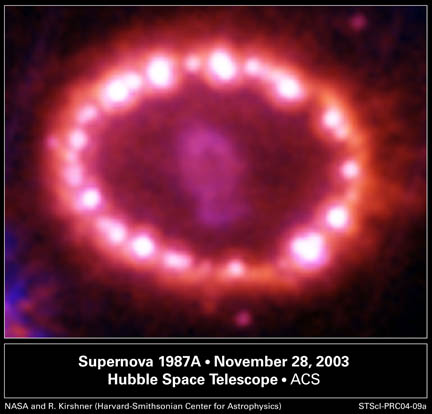By 1996 the shock wave from supernova 1987A began to strike a ring of material around the supernova. As the shock wave hit, it began to heat the material from a couple thousand to a half million degrees Celsius. As these gases heated up, they lit up. In 1996 the first 'pearl' lit up. More and more parts of the ring lit up as the shock wave progressed outward, until in 2003 we got the full string of pearls seen above. In the next few years the entire ring will absorb the full force of the shock wave and is expected to glow so brightly that it will illuminate the presently dark clouds of material surrounding the region. These dark clouds are debris ejected from the star during its red giant phase tens of thousands of years ago. The ring is about 1 light-year across, or almost 1 million times larger than our Solar System.
The central glowing purple region is the expanding cloud of star debris from the supernova. This cloud contains all of the elements of the periodic table generated by the star over its lifetime and during the supernova itself. This material may in the future find its way into new stars and planetary systems.
Image credit: Hubble Space Telescope; The main source for HST images and explanations is HubbleSite.org.
|

